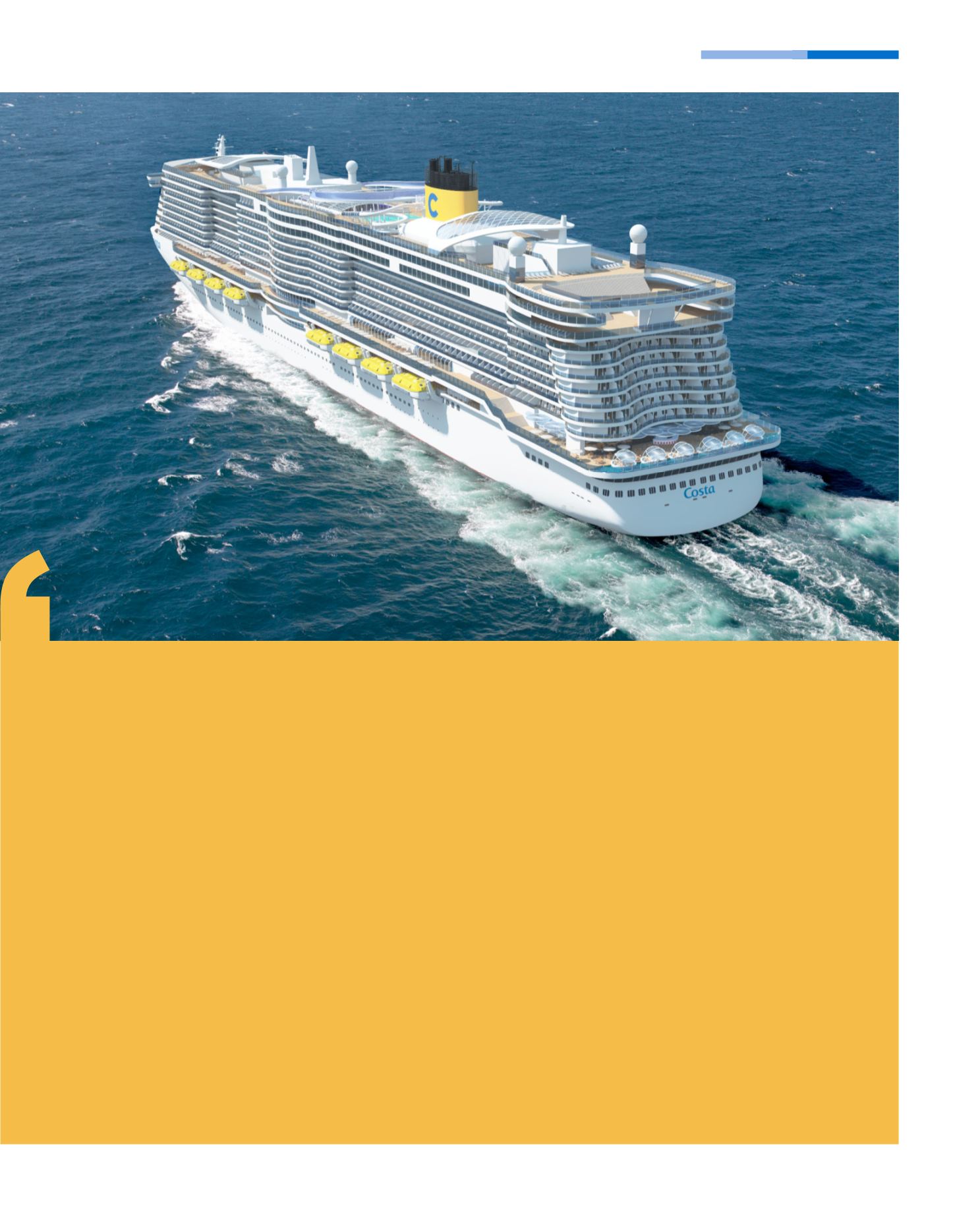

45
SEA
For Costa Cruises, addressing climate change means
innovation, renewal and commitment of financial
resources. Costa’s fleet enhancement strategy, based
on the introduction of newer and more fuel-efficient
vessels, underpins the decision to invest in the design
and building of cruise ships that will be powered by
LNG (Liquefied Natural Gas)
. LNG is considered
one of the most “environmentally friendly” fossil fuels
available and is set to become the fuel of choice for
shipping, both economically and in terms of reduced
environmental impact. This type of fuel is free of
sulfur oxide (SOx)
emissions, while it also enables
very significant reductions in
both nitrogen oxide
(NOx)
emissions (of up to
85%
) and
PM (particulate
matter)
, with PM in the exhaust gas being almost
entirely eliminated (a
95%-100%
reduction).
From a safety perspective, LNG, consisting primarily
of methane and used in its liquid form for storage
or transportation, offers the same - if not better -
guarantees than conventional fuels. Governed by
the provisions of the
IGF Code
2
, the use of LNG is
subject to strict requirements concerning the location,
installation, control and monitoring of the relevant
propulsion plant, machinery, systems and equipment
on board.
On Costa Cruises’ new ships, LNG will be used to power
dual-fuel engines. With the dual-fuel engine system,
Marine Gas Oil can be used when LNG is unavailable,
thus providing total redundancy for propulsion and
energy production systems under ‘safe return to port’
regulations.
Sustainability investments: LNG-fueled vessels
2
International Code of Safety for Ships using Gases or other Low Flashpoint Fuels: provides
prescriptions for the design and construction of ships so as to minimize the environmental
and safety risks associated with the use of LNG and other low flashpoint fuels.
















